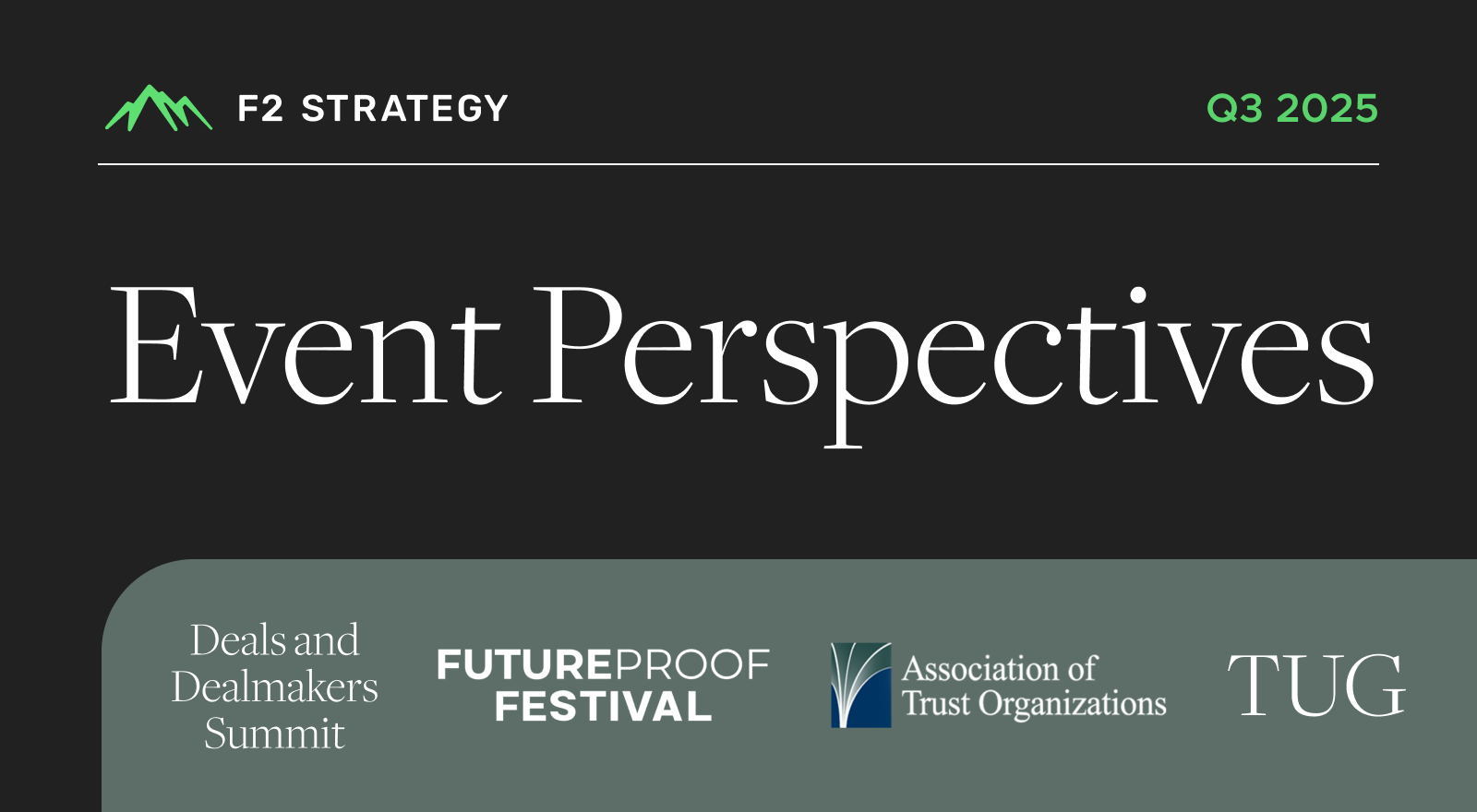F2 Strategy’s Executives in Residence bring years of high-level experience to our clients, and with that comes unique perspectives and powerful insights that wealth management firms can use to make critical decisions. Our “What I’ve Seen” series allows the executives to share their insights with the industry in three categories: driving change, marketing and sales, or customer-centric business.
Joel Friedman speaks to driving change by creating a consensus between technology vendors and wealth management firms on the definition of integration.

Here’s the hard truth for wealth management firms: a seamless client experience is a dream that is still very far from reality. When asked, advisors almost always say they want a “fully-integrated” experience. But what does that mean in reality? Every advisor and every vendor would give you a different answer. We need standardization between products to achieve the type of integration that makes the client and advisor experiences better. Competing technology vendors need to bring products to market that work with each other. But this isn’t one-sided. Before we can do that, we must build a consensus around the definition of integration so that we all know what we are driving toward.
History of Standardization Attempts
We’ve been talking about standardization for a long time. It’s been a decade already since yoursilverbullet.net ended its attempt to bring together a coalition of technology vendors to establish industry data and technology standards.
Since then, technology capabilities have steadily grown, and technology vendors have exploded. The famous and often referred to Kitces FinTech map displays a dizzying array of technology options for advisors. Most of those options do not talk to each other and reviewing hundreds of vendors can make it easy to believe that the concept of standardization is even harder to achieve now than a decade ago.
But in fact, it is possible. We’ve seen other industries do it. The insurance industry has adopted standards that streamline operations and facilitate growth. We have tools to do it as well. The availability of tools such as Open APIs means there is no reason your technology products aren’t talking to every technology product out there. So while we aren’t there yet, we are closer to a silver bullet today than we were in 2013.
Aligning Expectations with Your Technology Vendor
Back to defining integration…until we reach true standardization, advisors and vendors need to align expectations around integration. When they hear integration, many vendors think of digitization and automation of back-office services. Advisors either don’t ask or don’t know how to ask for what they really want until it’s too late. If your firm doesn’t have someone who understands all the ins and outs of technology, bring in an outside technology consultant to act as a trusted advocate on your behalf.
The types of questions your vendors should answer include:
- Who do you integrate with? And what is the type of partnership you have with them?
- How may clients have this integration deployed? Are any referencable?
- What is the breadth and depth of your integration? Do you use APIs? Is your integration bi-directional?
- How capable are you when it comes to supporting the integrations? (Some vendors have partner teams and focus on development which shows their true dedication to integrations.)
The Future of Integration
On average, each wealth management firm would need eight to nine products to integrate with each other to make the experience from client-facing advisor to back office seamless. Given the level of technology available to us today and the example of other industries such as insurance in creating standards, we can get there. Until that day arrives however, continuing to remove paper driven processes and pushing with your technology vendors to deliver more options that work with others in the industry is required to remain competitive.
It’s your right to get details from your technology vendors, contact us for help asking the right questions.




